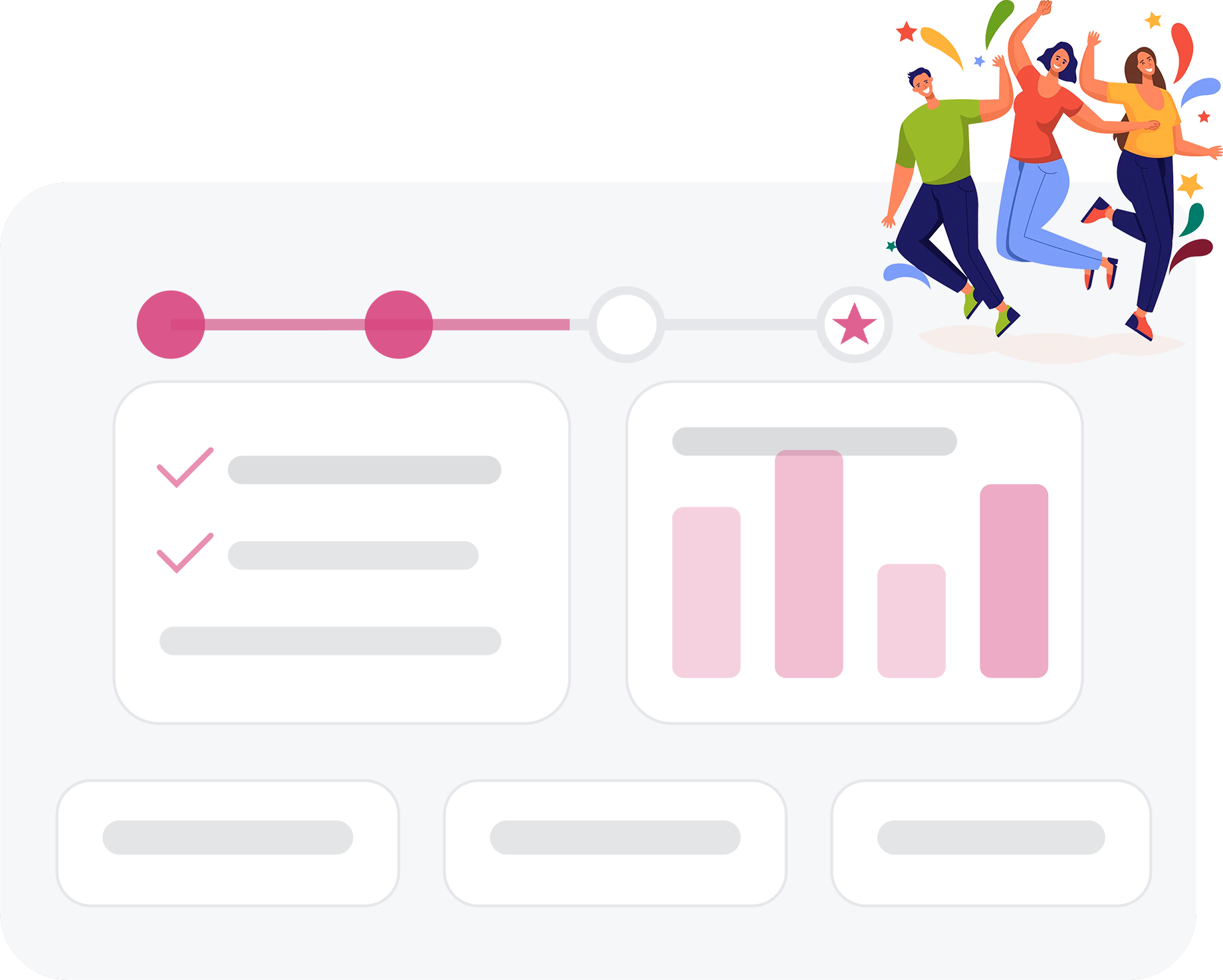 Introduction
Introduction
Welcome to this comprehensive guide on employee turnover. Understanding this crucial aspect of human resources is vital for any business aiming for long-term success. In this guide, we will delve into what employee turnover is, why it matters, and how it can be effectively managed.
What Is Employee Turnover & Why It Matters for Your Business
Employee turnover refers to the percentage of workers who leave an organization and are replaced by new employees within a given time frame. High turnover rates can be costly, disruptive, and damaging to staff morale, while low turnover rates can indicate a healthy, well-functioning company.
Key Takeaways
- Understanding employee turnover is crucial for business success.
- High turnover rates can be costly and disruptive.
- Effective management of turnover can lead to a healthier work environment.
The Basics of Employee Turnover
Before diving into strategies for managing turnover, it’s essential to understand its various types and what they signify. This section will clarify what employee turnover is and discuss its different forms.
What Is Employee Turnover?
Employee turnover is the ratio of the number of employees that had to be replaced in a given time period to the average number of employees. It’s a metric that can reveal a lot about a company’s work environment and operational efficiency. Investopedia offers a detailed explanation.
What is the main cause of employee turnover?
The main cause of employee turnover is often cited as poor management. Ineffective or unsupportive managers can lead to employee dissatisfaction, which in turn can prompt employees to leave for better opportunities. A good manager not only supervises work but also fosters a positive work environment, provides opportunities for growth, and offers support and recognition. When these elements are lacking, employees are more likely to seek new positions elsewhere.
 How to retain staff in a culture of high turnover?
How to retain staff in a culture of high turnover?
1. Strengthen Employee Engagement
- Build a Positive Work Environment: Create a supportive and inclusive workplace where employees feel valued and respected.
- Recognition and Rewards: Regularly acknowledge and reward employees for their contributions. This could include formal recognition programs, bonuses, or even simple gestures like verbal praise.
- Opportunities for Growth: Provide clear career paths and opportunities for advancement. Employees who see potential for growth are more likely to stay.
2. Enhance Communication and Transparency
- Open Dialogue: Foster a culture of open communication where employees feel comfortable sharing their thoughts and concerns.
- Regular Feedback: Provide consistent, constructive feedback and encourage a two-way dialogue. Employees should know where they stand and what they can do to improve.
- Transparency in Decision-Making: Involve employees in decision-making processes or at least keep them informed. When employees understand the “why” behind decisions, they are more likely to buy in.
3. Offer Competitive Compensation and Benefits
- Fair Compensation: Ensure that salaries and benefits are competitive within the industry and region.
- Comprehensive Benefits: Provide benefits that go beyond the basics, such as health and wellness programs, flexible working conditions, and mental health support.
4. Focus on Work-Life Balance
- Flexible Working Conditions: Offer flexible working hours or remote work options where possible. This can help employees manage their personal and professional lives better.
- Encourage Time Off: Promote the importance of taking breaks and vacations to avoid burnout.
5. Invest in Employee Development
- Training and Development: Offer ongoing learning opportunities, whether through formal training, mentorship programs, or access to educational resources.
- Skill Enhancement: Support employees in developing new skills that can benefit both them and the organization.
6. Cultivate a Strong Company Culture
- Values and Mission: Clearly define and communicate the company’s values and mission. Employees who align with the company’s purpose are more likely to stay.
- Community and Social Connection: Encourage team-building activities and social interactions to strengthen the sense of community within the workplace.
7. Conduct Exit Interviews
- Learn from Departures: When employees do leave, conduct exit interviews to understand the reasons behind their decision. Use this feedback to make necessary changes.
8. Use Data to Understand Turnover
- Analyze Trends: Use data analytics to identify trends in turnover and understand the root causes. This could include looking at turnover rates by department, role, or tenure.
- Engagement Surveys: Regularly conduct employee engagement surveys to gauge satisfaction and address issues before they lead to turnover.
9. Tailored Retention Strategies
- Individualized Approaches: Recognize that different employees have different needs. Tailor retention strategies to address these diverse needs, such as offering different benefits to different employee segments.
10. Foster Leadership and Management Quality
- Train Managers: Equip managers with the skills to lead effectively, provide support, and motivate their teams.
- Leadership Visibility: Ensure that leaders are accessible and visible, showing genuine interest in employees’ well-being.
Types of Employee Turnover
Not all turnover is the same. It can be categorized into different types based on various factors such as the reason for leaving and whether the turnover is beneficial for the organization or not.
Voluntary vs. Involuntary Turnover
Voluntary Turnover: This occurs when employees leave by their own choice. This could be for a new job opportunity, career change, or retirement.
Involuntary Turnover: This occurs when the organization decides to terminate the employment, often due to layoffs, poor performance, or violation of company policies.
Desirable vs. Undesirable Turnover
Desirable Turnover: Sometimes, the departure of an underperforming employee can be beneficial for the organization.
Undesirable Turnover: Losing a high-performing employee can be detrimental to the company’s growth and morale.
Turnover vs Attrition vs Churn
While these terms are often used interchangeably, they are not the same:
Turnover: Refers to employees leaving and being replaced.
Attrition: Refers to employees leaving but not being replaced.
Churn: Is often used in the context of losing customers rather than employees.
 The Importance of Measuring Employee Turnover
The Importance of Measuring Employee Turnover
Understanding employee turnover is crucial for any business aiming for long-term success. This section delves into what turnover rates reveal about a company and why it’s essential to keep track of them.
What Do Turnover Rates Tell Us About a Business?
Employee turnover rates serve as a mirror reflecting the internal dynamics of a company. High turnover often indicates dissatisfaction among employees, poor company culture, or ineffective management. On the other hand, low turnover suggests that employees are content, well-managed, and engaged in their work.
What Is a Healthy Employee Turnover Rate?
A healthy turnover rate varies by industry, but it generally ranges from 10% to 15%. Anything beyond this could be a red flag requiring immediate attention.
How to Calculate Employee Turnover
To calculate the employee turnover rate, you’ll need to divide the number of employees who left during a specific period by the average number of employees during that period, then multiply by 100.
Turnover Rate = (Number of Exits / Average Number of Employees) x 100Step-by-Step Guide to Calculating Turnover Rate
- Count the number of employees at the start of the period.
- Count the number of employees at the end of the period.
- Calculate the average number of employees.
- Count the number of employees who left during the period.
- Use the formula to find the turnover rate.
Alternative Ways to Calculate Employee Turnover
Some companies prefer to calculate turnover quarterly or even monthly to get a more immediate sense of their staffing stability. The formula remains the same; only the time frame changes.
 The Causes and Effects of Employee Turnover
The Causes and Effects of Employee Turnover
1. Top Reasons for High or Low Employee Turnover
Understanding the reasons behind high or low employee turnover is crucial for any business. High turnover can be a symptom of underlying issues such as poor management, lack of career growth, or an unsatisfactory work environment. On the other hand, low turnover often indicates employee satisfaction and a healthy workplace culture.
1.1 Top 10 Reasons for High Employee Turnover:
1.2 Top 10 Reasons for Low Employee Turnover:
2. How High Staff Turnover Affects Business
High staff turnover can have a ripple effect on various aspects of a business. From operational disruptions to financial losses, the consequences can be far-reaching.
3. Disruptions of Workflow
When employees leave, it often results in a disruption of workflow. Projects get delayed, and the remaining staff may have to take on additional responsibilities, leading to increased stress and potential burnout.
4. Low Workplace Morale
High turnover rates can lead to low morale among remaining employees. The constant change in team dynamics and the loss of experienced colleagues can affect productivity and job satisfaction.
5. Financial Losses
Recruiting and training new employees is costly. According to a study by the Society for Human Resource Management, the average cost to hire an employee is $4,129, and it takes about 42 days to fill a position.
6. Negative Workplace Reputation
A high turnover rate can tarnish a company’s reputation, making it difficult to attract top talent in the future. Websites like Glassdoor allow employees to share their experiences, and a pattern of high turnover can be a red flag for potential hires.
7. Risk of Losing Talented Employees
High turnover rates can also put a company at risk of losing its most talented employees, who may seek more stable work environments. Retaining top talent is crucial for maintaining a competitive edge in the market.
 Industry-Specific Insights
Industry-Specific Insights
Understanding employee turnover is not a one-size-fits-all approach. Different industries have unique challenges and norms when it comes to turnover. In this section, we delve into the nuances of turnover by industry and what constitutes a high turnover rate.
Turnover by Industry
Employee turnover varies significantly across different industries. For instance, the hospitality and retail sectors often experience higher turnover rates compared to healthcare or technology sectors. Here are some general trends:
| Industry | Average Turnover |
|---|---|
| Retail | 15% |
| Food and beverage | 12% |
| Healthcare | 10% |
| Manufacturing | 8% |
| Technology | 7% |
| Construction | 18% |
| Logistics | 17% |
| Transportation | 16% |
| Education | 14% |
| Finance | 13% |
| Utilities | 11% |
| Information | 10% |
| Communication | 9% |
| Real estate | 12% |
| Professional and business services | 16% |
| Leisure and hospitality | 21% |
| Accommodation and food services | 24% |
| Other services | 15% |
| Government | 6% |
Discover GFoundry’s talent management solutions by Industries
Labor Turnover Statistics: What Is Considered a High Turnover Rate?
Defining what constitutes a ‘high’ turnover rate can be industry-specific. For example, a 20% turnover rate might be considered high in the technology sector but normal in the retail industry. Here are some factors to consider:
- Industry Norms: Always compare your turnover rate with industry averages.
- Seasonal Fluctuations: Some industries, like tourism, have seasonal turnover rates.
- Company Size: Larger companies often have lower turnover rates.
Understanding the industry-specific nuances of employee turnover can provide valuable insights for any organization looking to improve employee retention and overall performance.
 Preventive Measures and Solutions
Preventive Measures and Solutions
Reducing employee turnover is not just about reacting to departures but also about implementing preventive measures. In this section, we explore various strategies to prevent high turnover and ensure employee retention.
Employee Turnover Prevention
Preventing employee turnover starts with a multi-faceted approach that includes everything from recruitment to employee engagement.
Identifying the Right Candidates
Effective recruitment is the first step in reducing turnover. Hiring candidates who fit the company culture and have the necessary skills sets the stage for long-term retention.
Offering Competitive Compensation
Competitive salaries and benefits packages are crucial for retaining top talent. Regular market assessments can help ensure that your compensation packages remain competitive.
Recognizing and Rewarding Performers
Employee recognition programs can go a long way in boosting morale and reducing turnover. Whether it’s through financial incentives or public acknowledgment, recognizing hard work fosters a positive work environment. Know more about GFoundry’s Recognition and Rewarding here.
Designing Career Paths
Employees are more likely to stay if they see opportunities for career advancement within the company. Regular performance reviews and career development discussions can help in this regard.
Meeting Employees’ Training Needs
Continuous learning opportunities can also contribute to employee retention. Whether it’s through workshops, courses, or certifications, investing in employee development pays off in the long run.
Implementing these preventive measures can significantly reduce employee turnover, leading to a more stable and productive work environment.
How GFoundry Can Help in Managing Employee Turnover
GFoundry offers a range of features that directly contribute to reducing employee turnover. Here’s how:
- Engagement Thermometer: GFoundry’s Engagement Thermometer measures the happiness and well-being of your organization, providing real-time insights that can help you take immediate action to improve employee satisfaction. Know more here.
- Customizable Talent Management: The platform is highly customizable, allowing you to tailor your talent management strategies to meet the unique needs of your organization.
- Multi-Module Functionality: From learning and recognition to goal setting and KPI competitions, GFoundry offers a variety of modules that engage employees in multiple ways, thereby increasing job satisfaction and reducing turnover.
- Employee Journeys: Structured paths guide employees through their career, setting milestones and offering rewards, which not only motivates them but also gives them a sense of direction and purpose.
- Community Aggregation: The platform promotes community building by allowing the creation of interest groups, thereby improving internal communication and employee engagement.
- Integration Capabilities: GFoundry can integrate with existing platforms like ERP and business intelligence tools, making it easier to track and analyze turnover metrics.
By leveraging GFoundry’s advanced features, organizations can not only track but also significantly reduce employee turnover, leading to a more stable, engaged, and productive workforce.
 Monitoring and Analysis
Monitoring and Analysis
Effective management of employee turnover requires more than just reactive measures; it calls for proactive monitoring and in-depth analysis. In this section, we explore various tools and techniques to keep a pulse on your organization’s turnover rate and trends.
How to Identify Employee Turnover Rate Issues
Understanding the nuances of your organization’s turnover rate is the first step in addressing the issue. This involves not just calculating the rate but also analyzing it in the context of industry norms, seasonal fluctuations, and company-specific factors.
Conducting Exit Interviews
Exit interviews can offer invaluable insights into the reasons behind employee departures. They can help identify areas for improvement and can even sometimes lead to the employee reconsidering their decision to leave. Harvard Business Review discusses the importance of exit interviews.
Using Employee Surveys
Employee engagement surveys and pulse surveys can provide real-time insights into employee satisfaction and engagement levels, helping you address issues before they lead to turnover. Gallup explains the difference between pulse and engagement surveys.
Data Analysis
Data analytics tools can help you dig deeper into turnover metrics, identifying patterns and trends that may not be immediately obvious. This can include seasonality effects, department-specific turnover rates, and correlations with other business metrics.
Employee Turnover Trends for 2023
Understanding current trends can help you anticipate future turnover challenges. For instance, the rise of remote work has led to new turnover patterns, with employees valuing flexibility more than ever. This article predicts future work trends that could impact turnover rates.
By employing a mix of these monitoring and analysis methods, organizations can gain a comprehensive understanding of their employee turnover situation, enabling them to take informed preventive measures.
 Frequently Asked Questions (FAQs)
Frequently Asked Questions (FAQs)
In this section, we address some of the most commonly asked questions about employee turnover and retention, providing quick yet comprehensive answers.
Who is Responsible for Employee Turnover?
Employee turnover is a complex issue that often involves multiple stakeholders. While immediate supervisors play a significant role, HR departments, senior management, and even the employees themselves share responsibility.
Why Should I Care About Employee Retention?
Employee retention directly impacts your company’s bottom line. High turnover rates can lead to increased recruitment costs, lost productivity, and decreased morale among remaining employees.
Is a High Turnover Rate Good? Is a Low Turnover Rate Good?
Generally, a high turnover rate is considered detrimental, while a low rate is seen as beneficial. However, this can vary by industry and other contextual factors. For example, some turnover can bring in fresh perspectives.
What are the Main Signals of Employee Disengagement and High Probability of Leaving?
| Signal | Description |
|---|---|
| Decreased Productivity | Consistently lower output and quality of work compared to previous performance levels. |
| Frequent Absences | Increasing number of sick days, late arrivals, or requests for time off without clear reasons. |
| Lack of Participation | Minimal involvement in team meetings, projects, or company events. |
| Reduced Initiative | Less willingness to take on new tasks, volunteer for projects, or suggest improvements. |
| Negative Attitude | Displaying a consistently negative outlook towards work, colleagues, or company policies. |
| Poor Communication | Reduced or ineffective communication with managers, peers, and team members. |
| Disengagement from Development Opportunities | Showing little interest in training, learning, or career development programs. |
| Isolation from Team | Spending less time collaborating with team members and more time working alone. |
| Increased Complaints | Frequent complaints about workload, work environment, or dissatisfaction with job roles. |
| Exploring External Opportunities | Openly discussing job searches, interviews, or networking for new opportunities outside the company. |
| Reluctance to Commit to Long-Term Projects | Hesitation to engage in projects that require long-term commitment, indicating uncertainty about future with the company. |
| Increased Engagement on Job-Hunting Platforms | More frequent activity on LinkedIn or other job search platforms, suggesting they are seeking new opportunities. |
| Changes in Personality or Attitude | Sudden shifts in behavior, such as increased irritability, withdrawal, or lack of enthusiasm. |
| Making Unrealistic Demands | Employees start making requests that seem out of touch with their role or the company’s capabilities. |
| Avoiding Work Social Events | Consistently avoiding company social events, indicating a potential disconnect from the team or company culture. |
| Changes in Personal Appearance | A decline in grooming or adherence to dress code, possibly signaling a loss of interest in their role or the company. |
| Workplace Ostracism | Feeling excluded or isolated by colleagues, which can lead to disengagement and a higher likelihood of leaving. |
| Unresolved Conflicts or Grievances | Persistent issues or complaints that go unaddressed, building frustration and possibly driving the employee away. |
| Increased Use of Personal Devices During Work Hours | Excessive use of personal phones or other devices during work, indicating a lack of engagement with work responsibilities. |
Conclusion
The Bottom Line
Managing employee turnover is a multi-faceted challenge that requires a strategic approach. By understanding the causes, implementing preventive measures, and continuously monitoring and analyzing data, organizations can significantly reduce turnover and improve overall performance.
Subscribe to GFoundry Newsletter: Weekly Insights on HR’s Most Pressing Topics

Keep on reading:
- The Ultimate Guide for Remote Onboarding
- Pulse Surveys & People Engagement
- Benefits of a Good Organizational Climate: Productivity and Talent Retention
- Talent management platform to boost employee engagement
- How to Choose the Right Talent Management Platform for Your Business
- How to Attract, Retain, and Develop Top Talent
- The Ultimate Guide to Remote Talent Management
- HR Trends: What Will HR Look Like in 2024?
- How to improve Employee Engagement and Performance? Your Ultimate Guide
- Employee well-being – the complete guide
- How to create Impactful Learning Journeys for Employees?
- Feedback: what it is, its importance and how to do it (complete guide)
- What is the importance of Compensation and Benefits for employees?
Ready to get started?
Take the next step and learn more about how GFoundry can help you.
